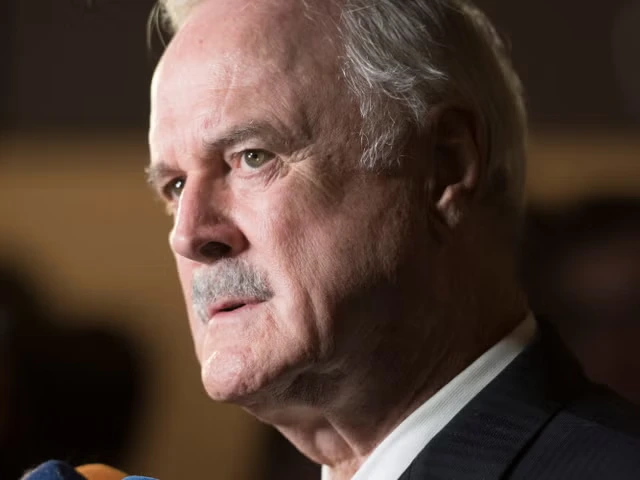In 1991, famed comedian John Cleese (Monty Python, Shrek, Clue, Harry Potter) gave a speech to entertainment industry managers on the topic of Creativity. Cleese had established his own entertainment company, VideoArts, and took this opportunity to teach other professionals about his passions. As a therapist who serves quite a few creative professionals, I found the passage below especially interesting:
“…The most creative professionals always played with a problem much longer before they tried to resolve it. This is because they were prepared to tolerate the discomfort (anxiety) that we all experience when we haven’t solved a problem…Until we solve a problem, we feel an internal agitation or tension or uncertainty that makes us just plain uncomfortable. We want to get rid of that discomfort, so we take a decision–not because we’re sure it’s the best decision, but because taking it will make us feel better. Well, the most creative people learn to tolerate that discomfort for much longer. And so, because they’ve put in more pondering time, their solutions are more creative.”
–Watch the whole talk here
They were prepared to tolerate the anxiety. Let’s think about that. This means creative people are actually the most adaptive, patient, tolerant, strong people when it comes to anxiety. Wow! Us ADHD’ers have developed resilient strength from the adversity we’ve faced! Sure, we probably all wish that we could jettison the over-thinking and ruminating once in a while, but what if there is actually strength in these tendencies? I’m not openly suggesting that we should intentionally engage in hand-wringing, but maybe we could see it for what it is – STRENGTH! This perspective helps us reframe the experience and allows us to avoid the self-condemning thoughts that often accompany anxiety. “Here I am overthinking, again,” we may tell ourselves, “I’m such a weak-minded loser.” But No! What if we understood it like this: “I’m thinking about this problem a lot, probably too much. I must be feeling anxious about it. That’s ok, though, I’m good at tolerating my anxiety. I’m pretty strong like that. I will come up with a solution eventually. Until then, I’ll keep encouraging myself to think it through patiently. If I get too spun-up about it, or if I just get tired of thinking about it, I’ll take a break, maybe even a very long break. I will allow myself the freedom to not think about it.”
Cleese continues by describing the struggle that has been echoed by every ADHD’er I’ve ever worked with. Highly decisive people and creative people often just don’t mix, and Cleese’s words help me finally understand why:
“Now, the people I feel it is hardest to be creative with are the people who…feel they need to project an image of themselves as decisive. And they feel that to create this image, they need to decide everything very quickly and with a great show of confidence. Well, this behavior, I suggest sincerely, is the most effective way of strangling creativity at its birth.”
We all know how this one goes, right? We’ve all been there. The power structures within Western economics almost always create a situation where a managerial, directive, opinionated person is placed in charge of the creative person. The manager is usually not a creative person themselves, at least in the same form of creativity. The manager just wants the job done, just wants an answer, just wants it finished. Cleese suggests that the manager is at least partially driven by their own anxiety to finish the project, while the creative person is better at sitting with the anxiety to fuel the creative process.
Here’s an example:
I’m a huge fan of 30Rock, a sitcom that played highly on the tensions created by this same dynamic between manager and creative person. In the video above, Jack Donaghy (Alec Baldwin) manages Liz Lemon (Tina Fey) and her team of creative writers. Liz finally stands up to Jack in the end and gets him to trust her and to leave the creative process to the writers. The show also highlights Liz’s need for Jack, though. Us creatives need the challenge of meeting deadlines, hitting our marks, setting and achieving goals, and being on time. Accepting our need for the manager can lead to great success. Accepting that there will always be a tension within this dynamic can allow us the freedom to create without harsh judgments toward the manager or toward ourselves. We can achieve tremendous freedom this way.
Honestly, we see this same dynamic play out in many different settings. It happens at work when a manager needs a writer to finish an article. It happens at church when an administrator wants the worship team to perform a piece of music a certain way. It happens at home when a creative spouse is taking too long to paint an accent wall and needs a little help over the hurdle of time management. It happens in recording studios and creative workshops and think-tank meetings and business meetings and performance reviews and in countless other settings every day. Wherever there is creativity there will be conflict. Let’s lean in to accepting that both the manager and the creative hold parts of the truth and need each other.
Click here for more information on how we treat Anxiety, ADHD, Autism, or to learn more about our services in general
If you’d like to talk more about managing anxiety, ADHD, conflicts, depression, or other troubling parts of life, please give me a call or schedule and appointment online. My website is www.altmancounseling.com , my phone is 770 615 6300, I help creative professionals overcome obstacles and get things done. I hope to speak with you soon.


0 Comments